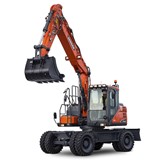Explore large excavator pricing, features, and key factors for mining & infrastructure projects in Australia. Get expert insights for 2025 buying decisions.
Key Takeaways
- Large Excavators are designed for maximum output across mining, infrastructure, and bulk earthworks.
- Pricing ranges from $300K to over $2.5M, depending on tonnage and tech.
- Lifting capacity, dig depth, fuel use, and machine cycle time are key factors when comparing models.
- Site setup, commissioning, and aftermarket support are crucial elements during purchase planning.
- Extended warranties and tailored financing can help manage total cost of ownership on multi-year projects.
Large excavators are the workhorses of major infrastructure and mining projects across Australia. When your project demands maximum output, deep excavation, and consistent performance in harsh environments, choosing the right large excavator becomes a critical procurement decision.
What Is a Large Excavator?
Large excavators typically start at 30 tonnes and can exceed 100 tonnes, with oversized buckets, high horsepower engines, and heavy-duty undercarriages built to sustain long shifts in tough terrains. These machines are engineered for maximum reach, breakout force, and material handling volume.
Pricing: What to Expect in Australia
Large excavator prices in Australia can vary significantly based on the machine's size, brand, technology, and additional attachments. Here's a breakdown to help you budget effectively:
- 30–40 tonne models typically range from $300,000 to $550,000, with popular brands including Hitachi, Komatsu, and Doosan.
- 50–70 tonne machines are priced between $600,000 and $900,000, commonly offered by brands such as CAT, Volvo, and Liebherr.
- 80–100+ tonne excavators can cost anywhere from $950,000 to over $2.5 million AUD, with brands like Kobelco, Hyundai, and SANY leading this segment.
Other pricing considerations:
- Used Equipment: Pricing can be 30–50% lower than new models depending on the machine's age, hours, and condition.
- Attachments & Extras: Adding rock breakers, rippers, tilting buckets, or quick hitches can increase the total cost by $20,000 to $80,000.
Best Use Cases in Australia
Large excavators are commonly used in:
- Mining operations (iron ore, coal, and rare earth sites across WA and QLD)
- Major infrastructure projects (transport tunnels, dams, ports)
- Bulk earthworks and quarrying
- Deep foundation and pile work
Key Performance Metrics to Compare
When evaluating models, focus on:
- Digging depth & reach: Critical for deep trenching and high-wall applications.
- Cycle time: Faster swing speeds and bucket returns improve daily productivity.
- Lifting capacity: Impacts your machine’s versatility across load types.
- Fuel efficiency: Hybrid vs diesel engines affect long-term costs.
- Hydraulic flow rate: Important for attachments and smooth operation.
Operator Technology & Automation
Most OEMs now offer smart features designed to enhance productivity and safety:
- GPS machine control for accurate trenching and grading
- Remote telematics for diagnostics, fuel tracking, and location monitoring
- Operator-assist systems to prevent over-digging and reduce wear
Examples: Komatsu iMC, Caterpillar Grade Assist, Hitachi ConSite
Site Prep, Delivery & Commissioning
Due to their size and weight, large excavators typically require:
- Transport via heavy haulage with permits
- On-site assembly with OEM technicians
- Stabilised pads or temporary haul roads
- Pre-start commissioning, testing, and compliance checks
Customisation Options
Depending on your application, look for:
- Boom and arm configurations (long reach, short radius, mass excavation)
- Specialised buckets and attachments
- Cab upgrades (pressurised cabs, dual-joystick controls, heated seats)
- Cold weather or dust kits for specific site conditions
Environmental Impact & Fuel Considerations
Diesel-powered excavators dominate, but hybrid alternatives are emerging for:
- Reduced fuel burn (up to 20%)
- Lower carbon footprint
- Government incentive eligibility
Warranties & Extended Support
Given the high capital cost of large excavators, comprehensive warranties and support packages are crucial for long-term risk management.
- Most new machines come with standard 3–5 year warranties or coverage based on operating hours (e.g. 5,000–10,000 hours), depending on the OEM.
- Extended warranty options are often available and can include powertrain and hydraulics coverage or full machine protection.
- Leading suppliers offer on-site service contracts, covering everything from scheduled maintenance to rapid-response breakdown repair.
- Many OEMs also back their machinery with parts availability guarantees and uptime KPIs to minimise project delays.
- When comparing quotes, prioritise suppliers who provide local service agents, dedicated account managers, and 24/7 support hotlines—especially for remote or FIFO-operated sites.
Total Cost of Ownership & ROI
Beyond the upfront purchase price, large excavators represent an ongoing investment in productivity. Evaluating the total cost of ownership (TCO) is essential to justify procurement.
- Assess fuel consumption per hour, particularly for high-cycle operations where fuel makes up a large portion of operating costs.
- Consider potential downtime, service part availability, and the cost of routine and emergency maintenance.
- Review the machine's expected resale value after 5–10 years—some brands hold value better than others due to market demand and serviceability.
- Measure productivity in volume/hour, especially if the excavator will be used on continuous-cycle tasks like overburden removal or deep trenching.
- Use available ROI calculators or modelling tools to compare different makes and models based on job site outputs, asset lifespan, and operating conditions.
Financing & Insurance
Most large excavator acquisitions are structured with financing to preserve capital and improve cash flow predictability.
- Equipment finance providers offer tailored loans with flexible terms for earthmoving machinery, including seasonal repayments and balloon options.
- Operating leases are ideal for short-to-mid term contracts or when managing fleet rotation—especially on government or tier-1 infrastructure jobs.
- Fleet insurance packages typically cover damage, theft, third-party liability, and can be bundled with finance to simplify management.
- Ask dealers or brokers for repayment schedules, asset depreciation forecasts, and residual value options to better estimate long-term costs and tax implications.
Australian Safety & Regulatory Compliance
Large excavators working on Australian job sites must meet rigorous safety and compliance standards to be legally and operationally viable.
- Machines must comply with AS 5327:2019, which governs the safe use of earthmoving equipment, and relevant ISO standards for visibility, access, and control systems.
- Operators and site managers must adhere to WorkSafe, Safe Work Australia, and state-specific OH&S codes, especially regarding operator certification, maintenance logs, and machine guarding.
- Many Tier 1 projects will also require compliance with site-specific documentation, such as Safe Work Method Statements (SWMS), pre-start checklists, and risk assessments.
- Ensure your supplier provides compliance documentation, pre-delivery inspection records, and offers guidance on meeting site induction and training obligations.
Final Thoughts: Choosing the Right Large Excavator for Your Operation
Investing in a large excavator is a high-stakes decision that directly impacts productivity, project timelines, and long-term profitability. Whether you're managing large-scale infrastructure builds, deep mining operations, or remote civil works, selecting the right machine goes far beyond tonnage. It’s about balancing capacity, durability, technology, and support over the full asset lifecycle.
Take the time to assess total cost of ownership, available warranties, site-specific compliance needs, and supplier capabilities before making a purchase. Prioritise brands with a strong local presence, proven reliability, and responsive aftersales service.
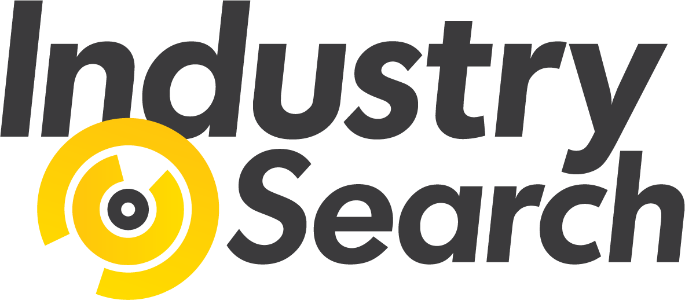

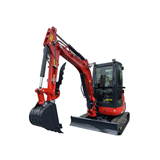

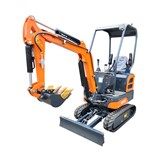
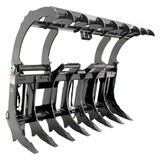
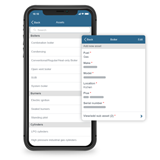
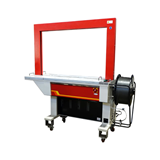


-160x160-state_article-rel-cat.png)
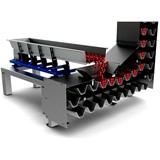



-160x160-state_article-rel-cat.png)






